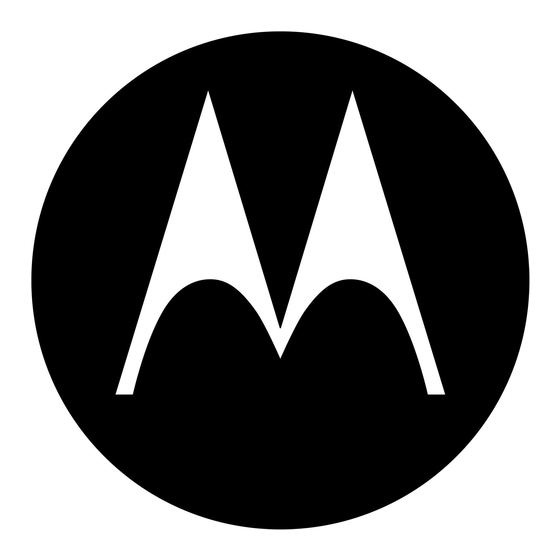Motorola ASTRO Digital XTS 3000 Temel Servis Kılavuzu - Sayfa 39
Radyo Motorola ASTRO Digital XTS 3000 için çevrimiçi göz atın veya pdf Temel Servis Kılavuzu indirin. Motorola ASTRO Digital XTS 3000 48 sayfaları. Handheld radio
Ayrıca Motorola ASTRO Digital XTS 3000 için: Operatör El Kitabı (12 sayfalar)

Controller Board
Basic Theory of
Operation
Vocoder Board
Basic Theory of
Operation
The digital back-end IC consists of an amplifier, the second mixer, an
IF analog-to-digital converter, a baseband down-converter, and a
2.4MHz synthesis circuit to provide a clock to the DSP-support IC on
the vocoder board. The second LO is generated by discrete
components external to the IC. The output of the digital back-end IC
is a digital bit stream that is current driven on a differential pair for a
reduction in noise generation.
The transmitter consists of an RF PA IC that gets an injection signal
from the VCO. Transmit power is controlled by two custom ICs that
monitor the output of a directional coupler and adjust PA control
voltages correspondingly. The signal passes through a RX/TX switch
that uses PIN diodes to automatically provide an appropriate interface
to transmit or receive signals. Antenna selection is done mechanically
in the control top.
The controller board contains the radio's microcontrol unit with its
memory and support circuits, voltage regulators, audio, and power
control circuits. Connected to the controller board are the display
board, RF board, vocoder board, keypad board, controls/universal flex,
and (optional) encryption module.
The microcontrol unit controls receive/transmit frequencies, power
levels, display, and other radio functions, using either direct logic
control or serial communications paths to the devices.The
microcontrol unit executes a stored program located in the FLASH
ROM. Data is transferred to and from memory by the microcontrol
unit data bus. The memory location from which data is read, or to
which data is written, is selected by the address lines.
The support-logic IC acts as an extension of the microcontrol unit by
providing logic functions such as lower address latch, reset, memory
address decoding, and additional control lines for the radio. The
microcontrol unit controls the crystal-pull circuit to adjust the crystal
oscillator's frequency on the microcontrol unit, so that the E-clock' s
harmonics do not cause interference with the radio's receive channel.
The regulator and power-control circuits include an unswitched +5V
discrete circuit and the regulator/power-control IC. Switched +5V is
used for all circuits on the controller board except the audio PA, which
is sourced from 7.5V. The regulator automatically provides 5V when
the radio is turned on. The regulator's power-down mode is controlled
by the microcontrol unit, which senses the position of the on/off
switch.
The vocoder board contains the digital-signal processor (DSP), its
memory devices, and the DSP-support IC.
The DSP performs signalling and voice encoding and decoding as well
as audio filtering and volume control. This IC performs Private-Line®/
Digital Private Line™ (PL/DPL) encode and alert-tone generation. The
IC transmits pre-emphasis on analog signals and applies a low-pass
(splatter) filter to all transmitted signals. It requires a 33MHz crystal to
function. An 8kHz interrupt signal generated by the DSP-support IC is
29
